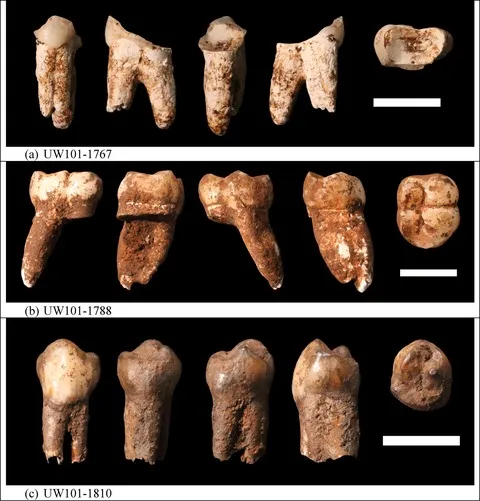How could one place provide so much information and yet cause so many more questions to be asked?
So far, after having only excavated a very small portion of the fossil bone bearing areas of the cave, the finds are one of the richest and most unusual bone assemblages of human ancestors found to date.
It's the largest collection of one primitive species found yet, in Africa.
Neanderthals and other more recent species are well preserved in Europe, but the species leading up to these, most likely Homonin in Africa, are often only represented by a couple of teeth and a few fragments of bone.
Not so... with Homo Naledi, the newest member of the family tree, from the rising star cave system.
We now have teeth and bones of at least 15 individuals from one chamber and a few other individuals from another totally separate chamber.
Both of these separate chambers contained a reasonably complete skeleton, each with a reasonably well preserved skull.
That's not one but 2 skeletons! of the same homonin species!
Up till now finding more than a few fossil teeth was great news, but in this cave system, multiple of some of the most complete skeletons ever are being revealed.
This is groundbreaking in the fields of Hominin research.
Not only that, the bones are found lying in the dirt, not encased in hard rock as they usually are in other dolomite caves in South Africa.
Scientists that first examined the finds judged the species to be 2-3 million years old based on the fact that its brain is about the size of an orange and the skull has very primitive features.
However the teeth were pretty much like modern humans and the rest of the skeleton is a mix and match of very primitive and very modern bone structures and features.
Very modern hands and feet, but very primitive shoulders and other body parts, with a small brain but modern teeth, with some extremely worn indicating old age.
Scientists were left scratching their heads.
To add to the perplexities, the species looked old but the bone deposits looked relatively young. That was my first impression, when looking at details of the excavation and since I know the caves in the area relatively well, having explored many of them over the years.
Then there was the even more curious manner in which the bones came to be accumulated. The least complex explanation, now with even more likelihood, since the discovery of a second similar deposit, is that this primitive species disposed of their dead.
Systematic disposing of the dead was one of the last traits considered to be uniquely human... but now we have this seemingly primitive species, with a brain the size of an orange disposing of their dead.
WOW, what next.
Now that the deposit has been rigorously dated even more questions are starting to arise along with some tantalizing hints at answers to other pressing questions in hominin evolution.
